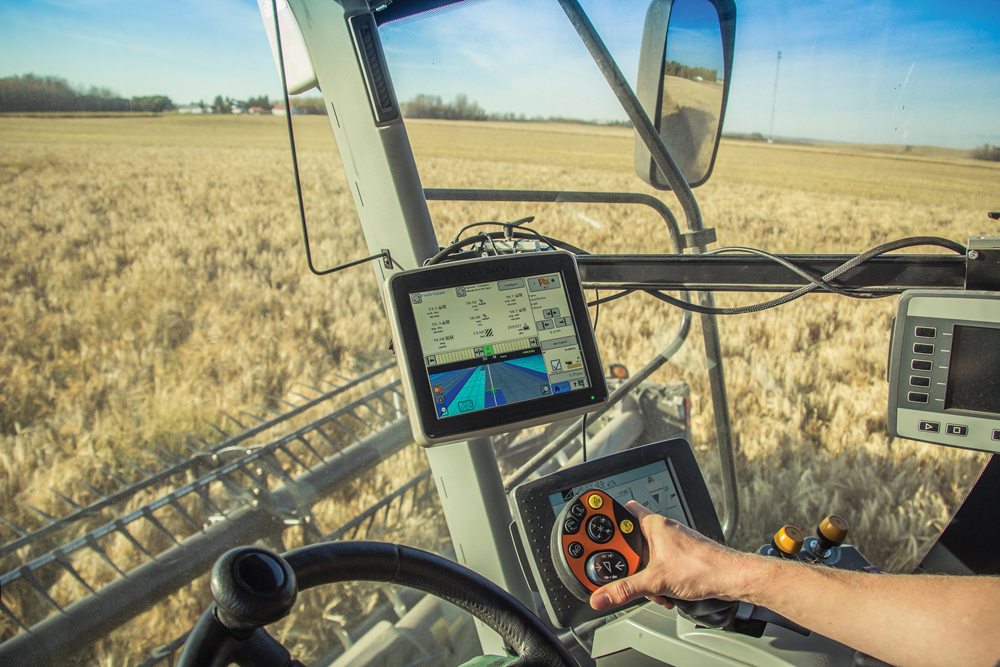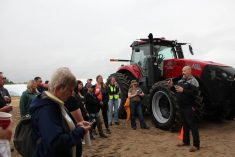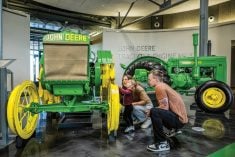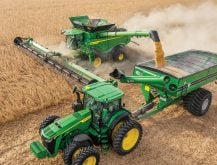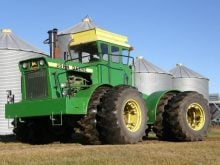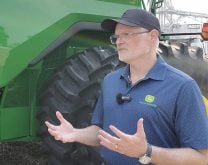John Deere currently offers a pretty broad range of digital features for its equipment, and many Prairie growers are familiar with using the brand’s GPS and data management systems. But for those using mixed fleets, transferring the Deere technology to other machines and getting anything near the full range of available features hasn’t always been possible.
Johannes Heupel, a farmer from Stony Plain, Alberta, says he ran into that problem on his farm.
“Like every operation we started with GPS for seeding and spraying,” he says. “Our combines, initially at least, were not equipped with GPS. I’m running Claas Lexion combines. So when you think of adding GPS to combines, you think of what your exiting GPS is and if you liked it. We happened to run John Deere GPS and liked it for its documentation and some other features it has. So we wanted to see if it would work on our Claas Lexions. That was in 2014 and there was no such option. Since my background is in electrical engineering, I looked into what it might take to do that.”
Read Also

Claas brings 1000 Series SP forage harvesters to Canada
In mid-August, Claas unveiled its new line of Jaguar forage harvesters at an event in Visalia, California, deep in the heart of that state’s dairy region.
Using his engineering skills, he created a “bridge” that allowed the Deere system to function on his Claas combines. Now, he’s expanded his bridge technology to function on not just the Claas machines, but also most of AGCO’s tractors. He’s formed a company called Agra-GPS Ltd and is retailing the system through a number of ag machinery dealers across Canada, the U.S. and Europe.
Heupel says the bridge allows almost all of Deere’s digital features to work when installed on equipment of another color. And collected data can even by transferred through the JDLink system.
“On the combine, it’s not just steering, it does the full yield and moisture mapping as well,” he says. “On my machines we’re running John Deere MachineSync. Obviously you can’t set the (Claas) combine, because you’re talking about a rotary versus a hybrid, so you can’t see the fan speed and all that.”
But those features can still be monitored and controlled through the Claas onboard system.
“And you’d want to anyway, I would think,” he adds.
Installing Heupel’s system on a non-Deere machine is as simple as unplugging a connector and inserting the bridge into the line.

“That’s really all there is to it. You plug it in. You run your John Deere wiring to the John Deere GPS display and receiver and you’re good to go. I’m using that to make it as easy as possible, no changing wires, putting an extra switch in, or God forbid, putting in an extra hydraulic. Essentially, it’s the same plug and play.”
Some machines have different connectors and electrical configurations, so Heupel’s bridge packages are tailored for specific brands and models to ensure there is no compatibility problems or mismatched connectors.
The bridge systems carry a US$3,300 price tag. Although they are available through a variety of prairie ag equipment dealers, Heupel can be contacted through his website www.agragps.com to help anyone find the nearest retailer.
“I do sell direct, as well,” he says. “But I prefer (buyers use) the dealers for local support. Typically, there’s not a lot of support required. But if there is, it’s good to have someone with knowledge plug in a laptop and see what’s going on. If there is a problem, it may be the wheel angle sensor on the tractor itself. So it’s good to have someone from the dealership to know if all the sensors are functioning properly.”


